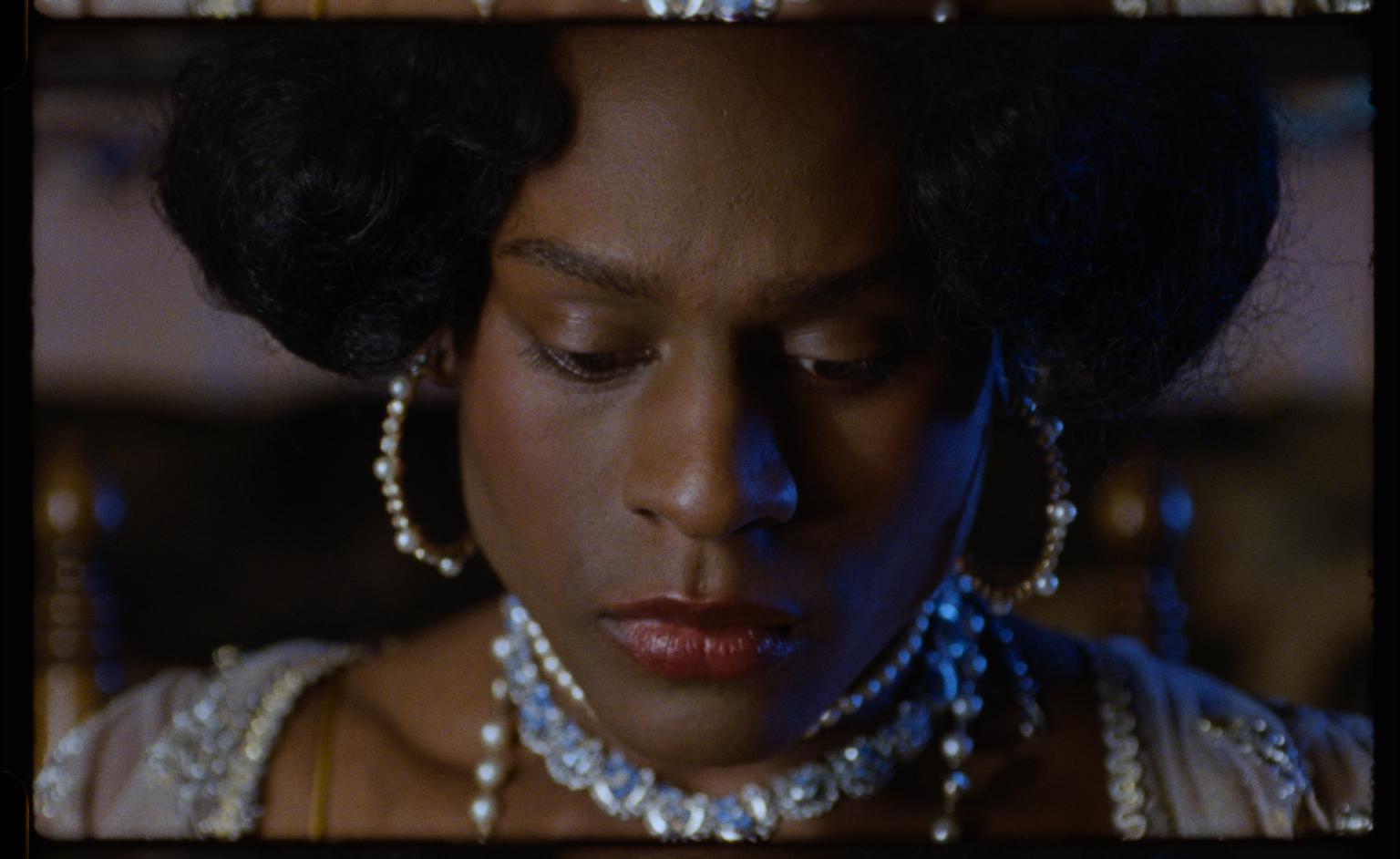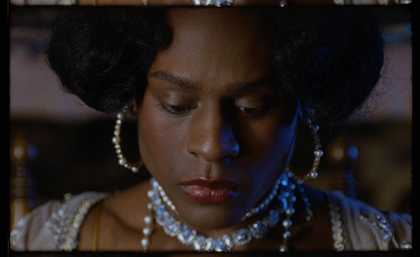13 rooms in Artist and Society
Salacia uses split-screen montages of archival footage and 16mm film to imagine a dream of freedom for 19th-century trans sex worker Mary Jones
Tourmaline brings the lives of transgender figures from history into focus across her artistic and activist practice. Salacia, her 6-minute film, centres on the story of Mary Jones, a Black trans woman and sex worker who lived in New York City in the 19th century. Jones was imprisoned in 1836 for stealing a man’s wallet, and was subsequently subject to intensive public and tabloid scrutiny and abuse. Tourmaline encountered her story in the New York municipal archives through court transcripts and press lithographs.
Tourmaline expanded on the archives’ narrative by adding imaginary scenes. She envisions a version of Jones’s life in Seneca Village. This was a small community in New York, where free Black and Irish people could own land. It was destroyed in 1857 to build Central Park. The film then moves to 20th-century archive footage of queer and trans rights activist Sylvia Rivera. It then returns to Jones, as if Rivera was speaking backwards in time to her.
Describing this combination of fact and fiction, Tourmaline said: ‘I’m always folding time in on itself because that’s how I experience it.’ Subverting the often racist and transphobic version of Mary Jones’s story and connecting her with other trans people of colour across time, Tourmaline positions Jones as a transhistorical figure. Like the main character in her film, who proclaims it in confidence, she affirms that ‘we can be anything we want to be.’
Art in this room


